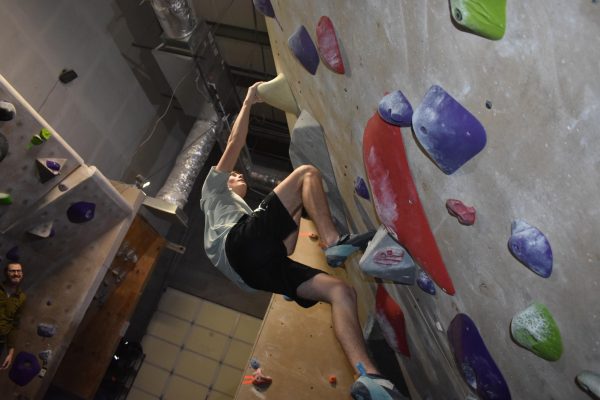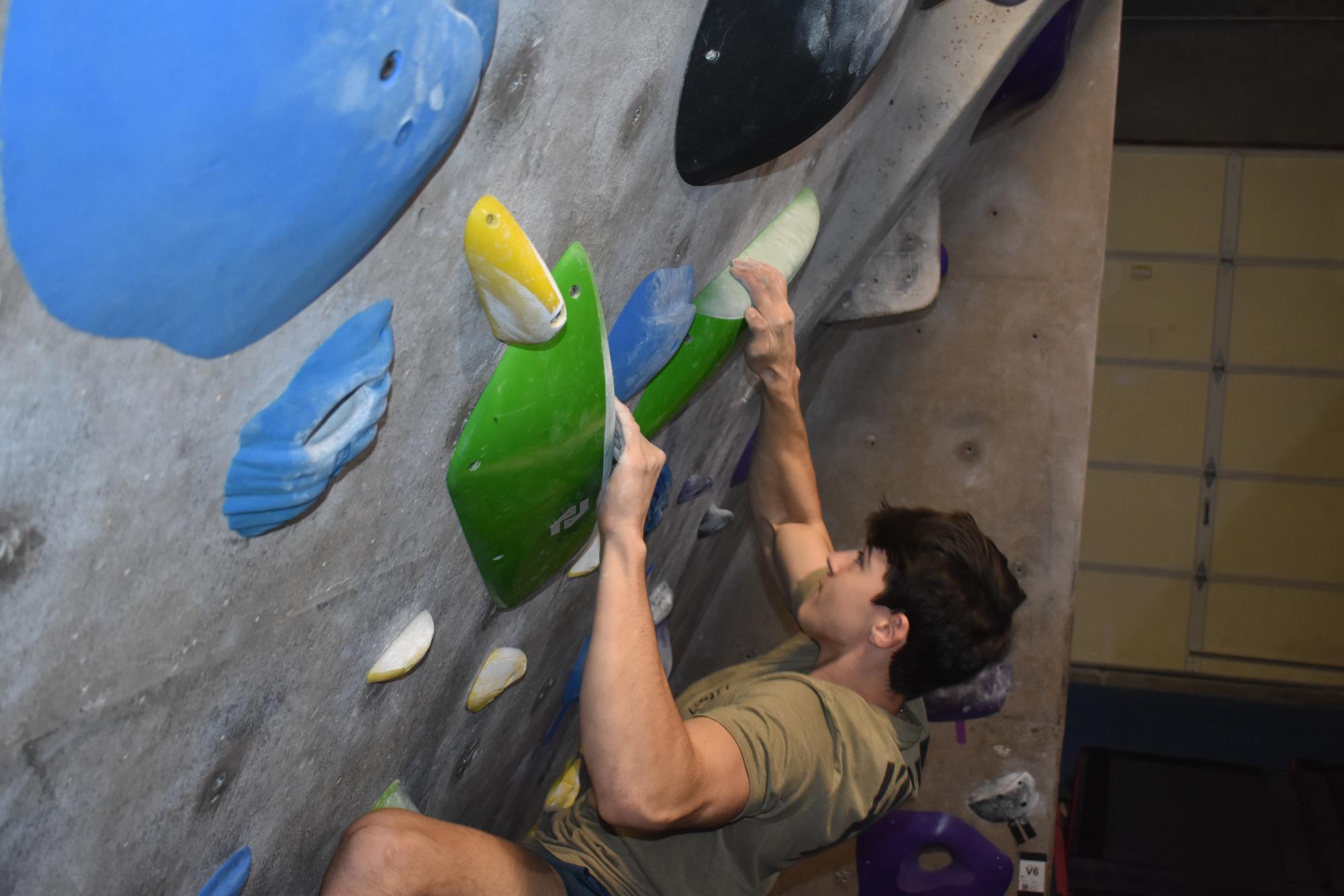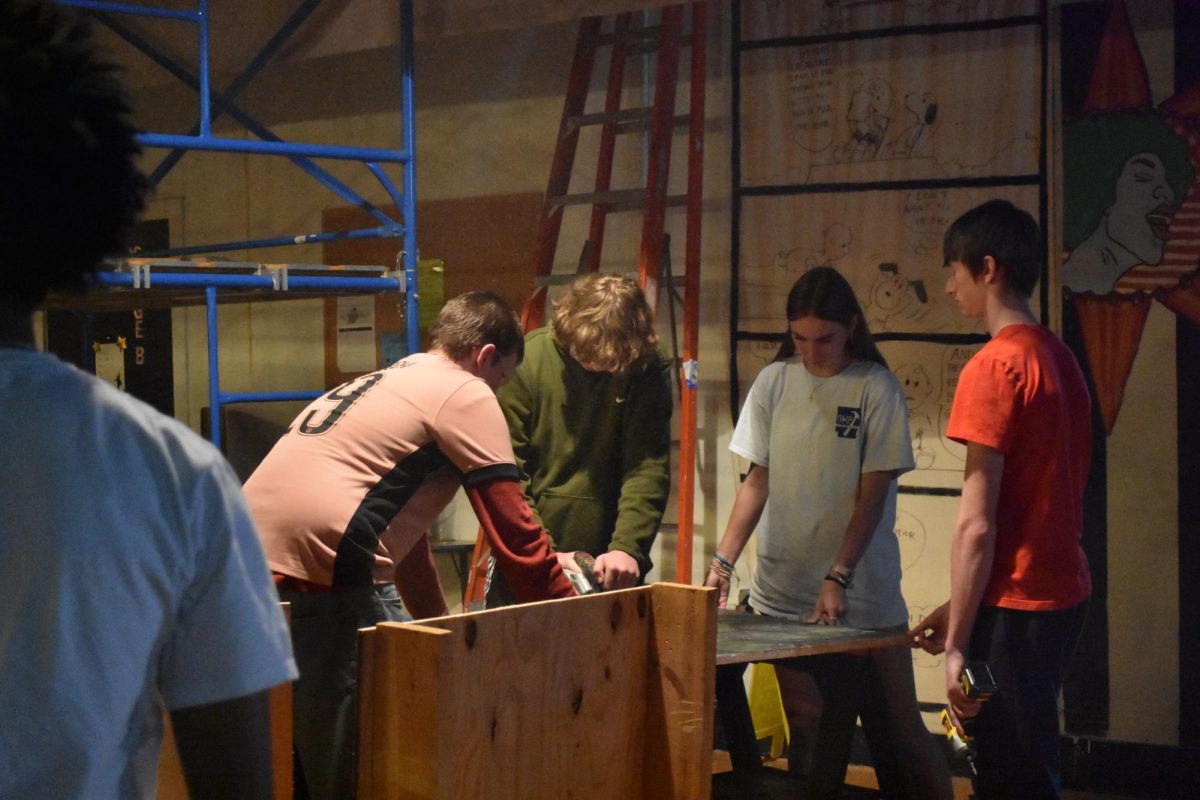
Senior Grayson Smith glares at the domineering rock wall before chalking up his hands. He latches on to the wall and slowly scales up
to the peak, putting his body and skill to the test. He initially started the Central Climbing Club to get his buddies to rock climb with him, but has since become a source of leadership and mentor for the team. When newcomers decide to take on the sport of rock climbing, Smith guides them quite literally though the ropes.
“When I get someone into it, I tell them, straightforward, the biggest thing is consistency. Start coming in three times a week and you’ll definitely start seeing results. The new rock climbers should also prioritize their technique before prioritizing strength. You may not even be able to do a pull up and still climb well,” Smith said.
Newcomers learn techniques such as power spotting and hook placement, slowly building confidence and skill, then gradually undertaking different grade climbing routes that range from D-0 to B-17. Junior Riley Matthews finds rock climbing to be a less stressful type of competitive sport, because of the club’s relatively small size.
“The rock climbing team is all really supportive and nice to be around. I probably wouldn’t be rock climbing if it weren’t for the community,” Matthews said. “It’s not as competitive as most other sports. So that’s kind of nice.”
Both Smith and Matthews go to the rock climbing center three times a week and rock climb competitively through the Arkansas Scholastic Climbing League.
“The hardest challenges I’ve faced in rock climbing are the plateau where I stay on the same difficulty for a long time. The hardest thing is getting over that plateau and believing in yourself to get a higher grade,” said Matthews.
The sport requires you to build your grip upper body strength, and adapt to the stress and sore fingers that come from climbing boulders. When it comes time to climb a mountain, the training pays off.
“The best mountain I’ve climbed is in Jamestown. The annual competition is called King of the Crag, with routes that range from 20 to 80 feet.”
Smith said. “When you’re at the very top you’ve got a few things going on in your mind. First you’re thinking, I don’t want to fall here, it’s kinda scary, but you kinda have to press that fear down and get out of your comfort zone and it ends up being really rewarding. When I get to the top and clip the anchors, I look back at everything below me, and it just feels empowering.”
Smith eventually made it to nationals, after completing regional, divisional, and qualification rounds.
“I was trying to keep low expectations as I’ve been doing this for eight years. I had to keep myself calm on the wall and try not to shake, and stay completely focused,” Smith said. “I was just happy to be there, I wasn’t expecting to win.”









